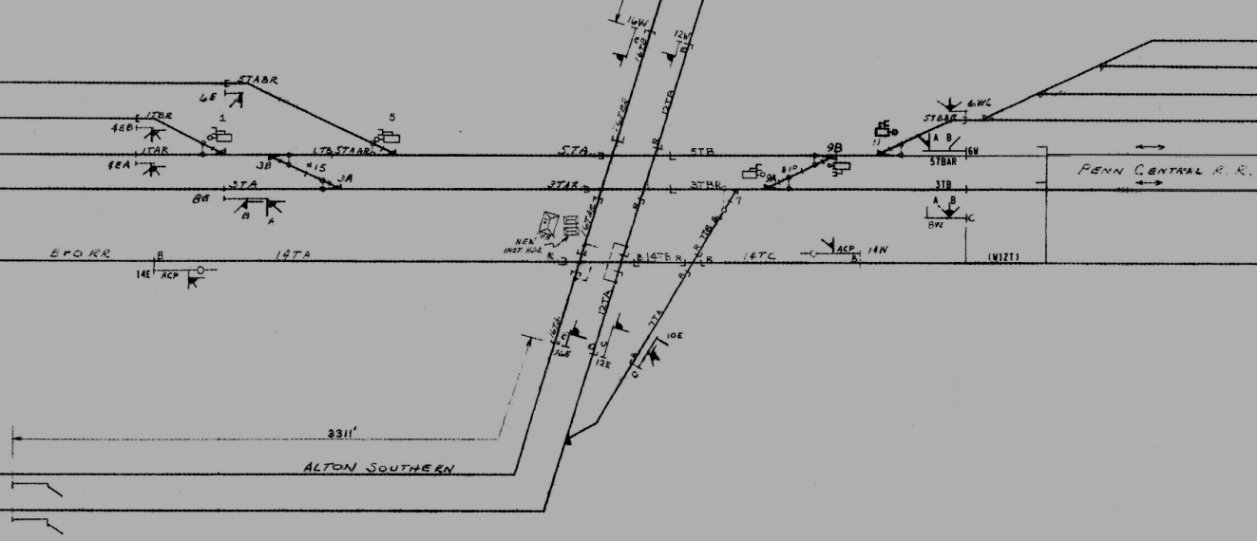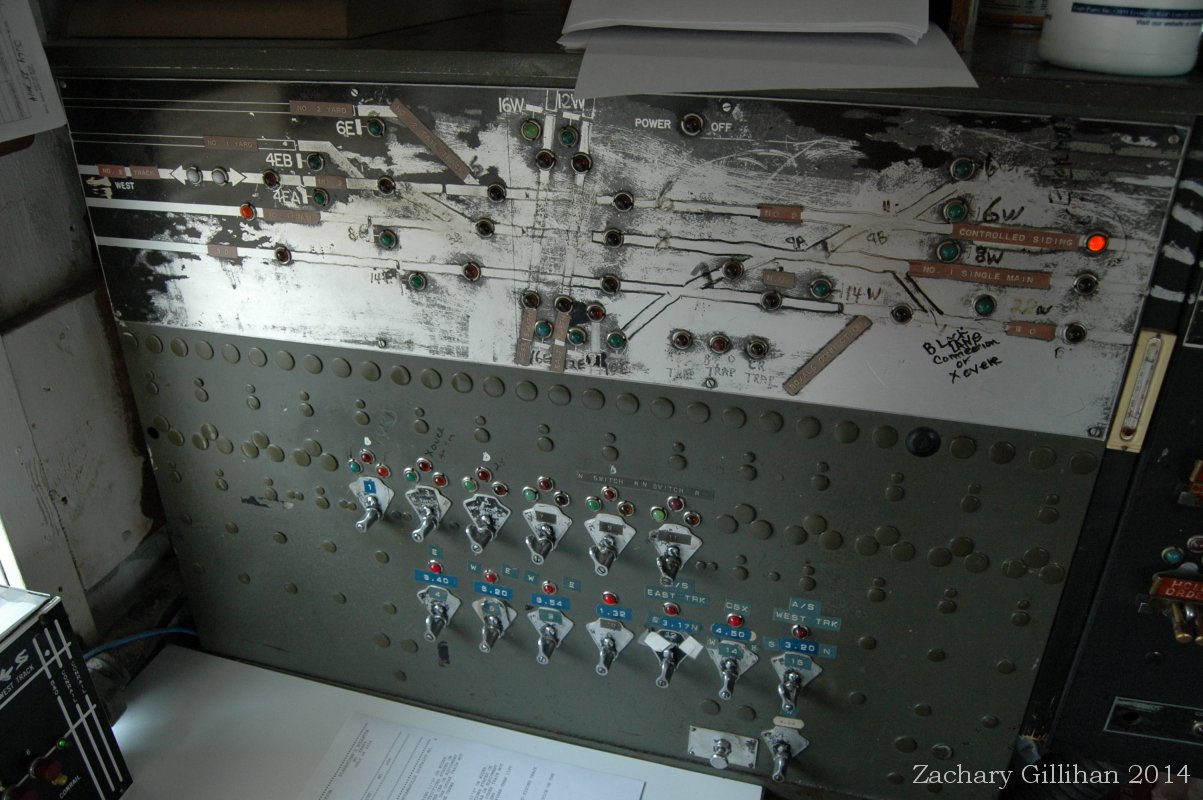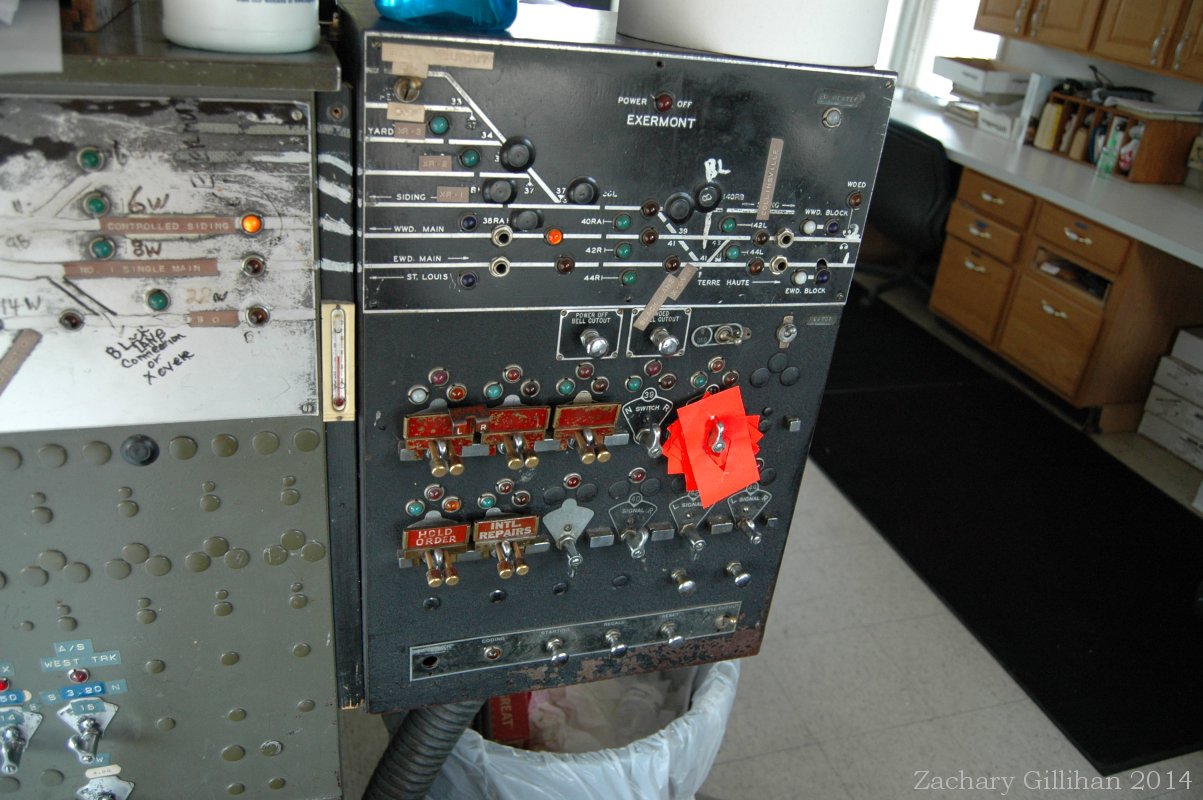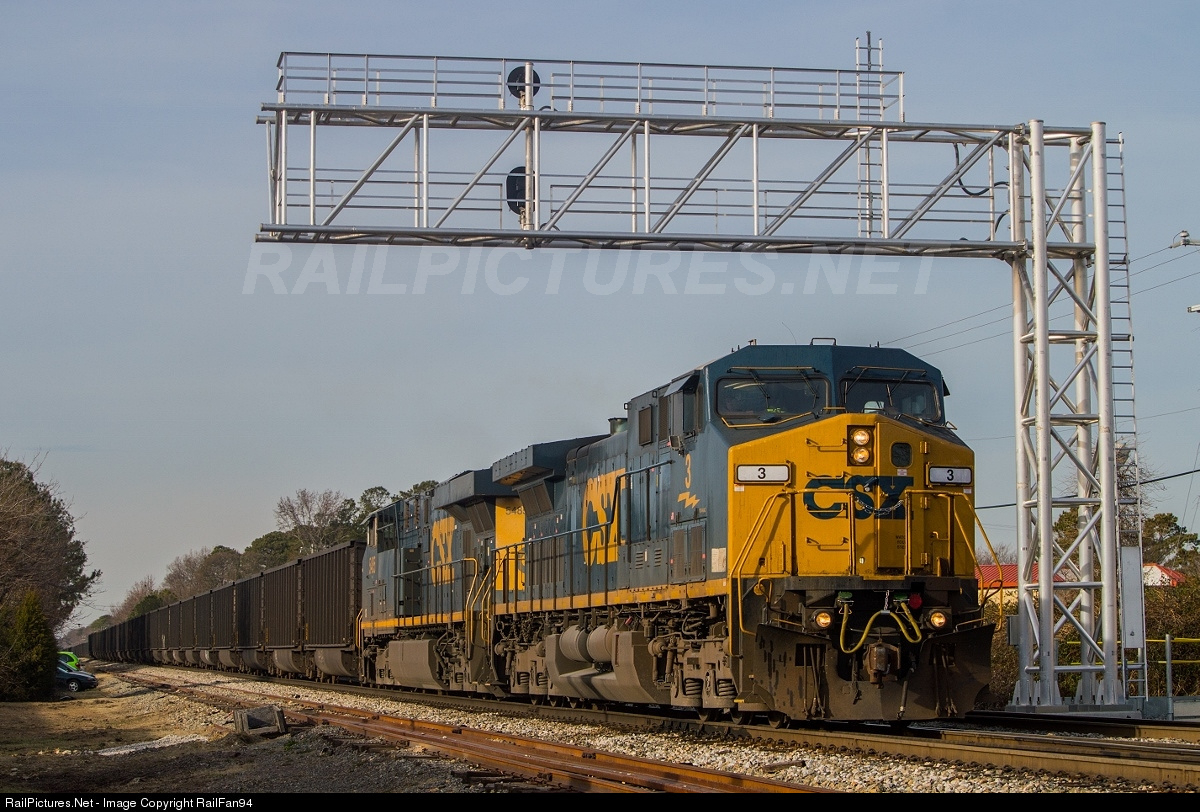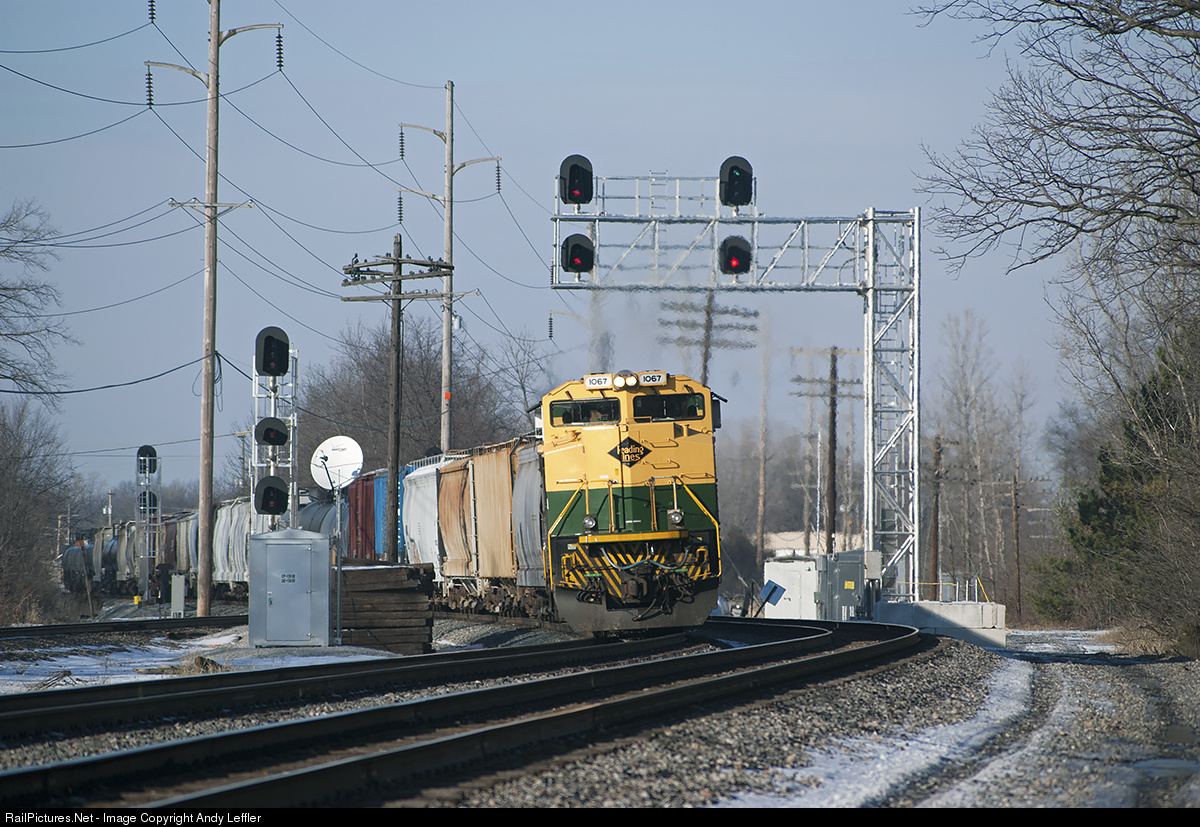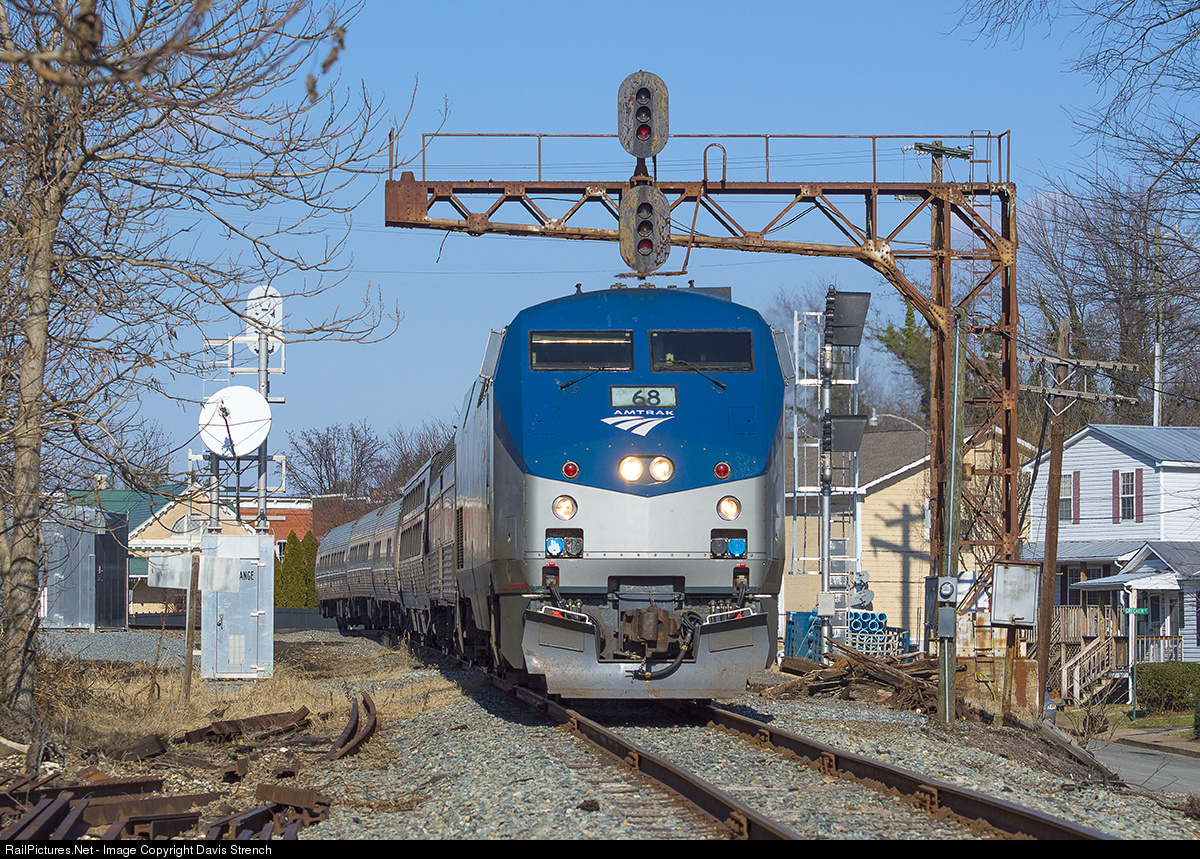LEAMAN Block Station is located in the heart of Pennsylvania Dutch country midway between the regular interlockings of PARK and CORK. Necessary to fill in a 20 mile gap between interlockings on the famous Main Line, LEAMAN has most of what one expects from a TBS with a pair of hand throw crossovers. However LEAMAN is also equipped with a pair of optional extra semi-automatic signals, 4L and 2R, controlled from some sort of apparatus inside what is drawn on the diagram with the symbol of an interlocking station.
Up close and personal LEAMAN is in fact little more than a shack, although it looks to be of slightly stiffer construction than most plywood TBS shelters. The station sign is a Penn Central original, painted grey (blue?) to fit Amtrak's corporate identity.
Inside is a rather important looking cabinet and what looks like an intercom system. As you might guess the cabinet is in fact the...block machine (?), which consists of a small unit lever type panel with two levers, one each for the 2R and 4L signals. (I have seen a photo of the LEAMAN machine, but unfortunately I was unable to locate it for this article :-( ) Normally the signals are set to operate automatically, but when the TBS is in service they are set to Stop after the passage of train movements. Said movements are coordinated with the dispatcher and nearby towers using the block phone (intercom thing). The panel is not original as the interlocking sheet tells us the signals were originally controlled by a pair of "Model 6" controllers...whatever those are.
The signals are nothing special, each consisting of a single head PRR position light with Stop and Proceed marker. The main difference between these signals and automatic block signals is the lack of a number plate. If you are wondering why the right of way looks so wide that is because it was 4-track up until ~1948 before being reduced to two.
In this closer view of the signal it appears that it is composed of a mix of PL2 and PL3 lamp units with the PL3 being in the 9 o'clock position. Because LEAMAN is closed the signals were working automatically and displaying Clear in absence of any trains.
The 2R signal mast is a much more tidy affair, the mast sporting a fresh coat of silver paint. As the new white relay hut hints, fresh paint will not save this old equipment.
This single head PL is composed entirely of PL3 units. Trains diverging to run against the flow of traffic would get a Stop and Proceed signal when the points were set by hand and the lever thrown. If you are wondering how trains already moving against the flow of traffic would handle the lack of wrong direction signals, the rulebook already covers hand crossovers and block stations. The movement authority extends to the fouling point of the switches and trains are not to proceed until given a hand signal by the operator.
If the 2R mast wasn't a like-for-like replacement, the C&S men certainly did a fine job repainting it.
Between 2005 and 2007 the Amtrak installed concrete ties on the old Main Line for 110mph operation. This resulted in the replacement of the AWL and BWL switch locks with these standard US&S electrically locked units. Note, I am not sure if these actually provide any locking function as seen here. The original locks sat in the middle of the crossovers and would unlock both switches of the turnout at the same time.
Despite the concrete tie upgrade, the crossovers remained Slow (15mph) speed affairs. The one concession to modernity were a pair of spring frogs which eliminate the flangeway gap.
So when I say that LEAMAN was "the place to be", I'm not just riffing on its name. For the pool of block operators on Amtrak's Harrisburg Line, being qualified to operate LEAMAN was quite the feather in one's cap. Working LEAMAN was almost always extra work, and its distance from other tower assignments in the Philly area meant that the operator would earn travel pay as well. If that wasn't enough any time an operator came out to LEAMAN they were guarenteed a full 8 hours of pay, even if the service was only needed for a fraction of that time to say cross over one or two trains around a blockage.
To become qualified in a tower of block station, one must first train under the supervision of a qualified person. Because LEAMAN was open so infrequently, opportunities for the normal cast of block operators to get qualified were few and far between. Because only a small handful of individuals maintained a LEAMAN qualification, they were almost guarenteed to get the windfall, normal job duties and seniority rules aside. Usually a qualified operator would get called off his normal job (bonus), travel out to LEAMAN (another bonus), open it then only work 4 hours while getting paid for 8 (triple bonus!).
Before I sign off I should make it clear that this sort of glorified crossover was an anomaly even on the well to do PRR. West of CORK the next two TBS's, E-Town and Florin, were simple hand crossovers without protecting signals. LEAMAN was located nearby the junction with the now famous Strassburg railroad, but that probably didn't provide all the justification for it. No matter what spawned its initial creation, today LEAMAN interlocking is just another point and click target on the CTEC Section B dispatching monitor, but the little shack remains, an echo from a previous time.














